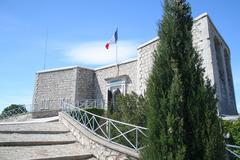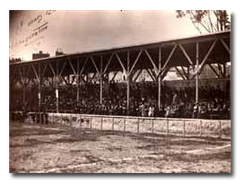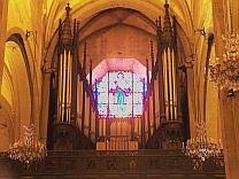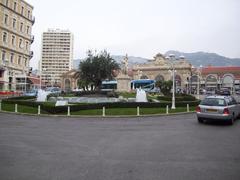Comprehensive Guide to Visiting Allée de la Charité, Toulon, France
Publication Date: 23/07/2024
Introduction
The Allée de la Charité in Toulon, France, is a destination that seamlessly blends historical significance with cultural richness. This charming street, dating back to the 18th century, has witnessed the evolution of Toulon from a significant naval base to a thriving urban center. Named after the charitable institutions that once lined its path, the Allée de la Charité serves as a testament to the city’s enduring commitment to social welfare and philanthropy. This guide will delve into the rich history of Allée de la Charité, provide practical visitor information, and highlight the cultural and architectural marvels that make this street a must-visit destination. Whether you’re a history enthusiast, an architecture lover, or simply a curious traveler, this comprehensive guide will equip you with all the essential insights to make the most of your visit. For more detailed information, check out the official Toulon tourism website.
Table of Contents
- Introduction
- History of Allée de la Charité
- Visitor Information
- Special Sections
- FAQ Section
- Conclusion
History of Allée de la Charité
Origins and Early Development
Allée de la Charité dates back to the 18th century. Originally part of a larger urban development plan, the street was named in honor of the charitable institutions established nearby, such as hospitals and orphanages. These institutions played a crucial role in supporting the less fortunate members of society.
18th Century - The Age of Enlightenment
During the 18th century, Toulon was a significant naval base for the French Navy. The Allée de la Charité was strategically located near the port, making it a vital thoroughfare for both military and civilian activities. The street was lined with grand buildings housing various charitable organizations, reflecting the Enlightenment ideals of philanthropy and social welfare.
19th Century - Industrialization and Urbanization
The 19th century brought significant changes with the Industrial Revolution, leading to rapid urbanization. The street saw the construction of new buildings, including schools and hospitals. The Hôpital de la Charité was a notable institution, providing medical care to the city’s growing population and playing a crucial role during epidemics.
World War II and Post-War Reconstruction
Allée de la Charité was heavily impacted by World War II, with many buildings damaged or destroyed. Post-war efforts by the French government and international aid organizations focused on rebuilding and restoring the area, revitalizing the street.
Modern Era - Preservation and Cultural Significance
In recent decades, significant preservation efforts have been undertaken to protect and maintain the street’s architectural heritage. Original buildings have been restored, and new developments have been carefully integrated to preserve the historical character. Today, Allée de la Charité is a vibrant part of Toulon, hosting cultural events and attracting visitors.
Visitor Information
Visiting Hours and Tickets
- Visiting Hours: Allée de la Charité is accessible to the public 24/7, though specific institutions like museums and cultural centers may have their own visiting hours.
- Tickets: Walking along the street is free, but some attractions may require tickets. It is advisable to check the official websites of specific institutions for ticket prices and availability.
Travel Tips
- Transport: Toulon is well-connected by public transport. Visitors can take buses or trams to reach Allée de la Charité. Parking is also available nearby for those driving.
- Nearby Attractions: Nearby attractions include the Toulon Opera House, the National Maritime Museum, and the Toulon Cathedral.
Special Sections
Notable Historical Figures and Events
Several notable historical figures and events are associated with Allée de la Charité. Jean-Baptiste de La Salle, a French priest and educational reformer, had a significant impact on the educational institutions along the street. The cholera epidemic of 1832 also highlighted the importance of the street’s charitable institutions.
Architectural Heritage
The street is lined with buildings showcasing various architectural styles, including Baroque, Neoclassical, and Art Nouveau. Notable buildings include the Église Saint-Louis and the Maison de la Charité, which now serves as a cultural center.
Special Events and Guided Tours
Allée de la Charité hosts various cultural events, including art exhibitions and historical tours. Guided tours are available for those interested in learning more about the street’s rich history and architectural heritage.
Photographic Spots
Photographic spots along Allée de la Charité include the ornate facades of historical buildings, the grand entrances, and the lush greenery that lines the street.
FAQ Section
Q: What are the visiting hours for Allée de la Charité?
A: The street itself is accessible 24/7, but specific institutions may have their own visiting hours.
Q: Do I need a ticket to visit Allée de la Charité?
A: Walking along the street is free, but some attractions may require tickets.
Q: How can I reach Allée de la Charité?
A: Toulon is well-connected by public transport, with buses and trams available. Parking is also available nearby.
Conclusion
In conclusion, Allée de la Charité is a historically and culturally significant street in Toulon, France. Its rich history, architectural heritage, and enduring legacy of philanthropy make it a vital part of the city’s identity. Through preservation efforts and cultural initiatives, Allée de la Charité continues to be a vibrant and meaningful part of Toulon, attracting both locals and visitors alike. Be sure to check visiting hours and ticket information before your visit to make the most of your experience.
Call to Action
Explore more about Toulon’s historical sites by visiting our other articles, and follow us on social media for the latest updates and travel tips. Don’t forget to download our mobile app for an interactive guide to Allée de la Charité and other attractions in Toulon.






